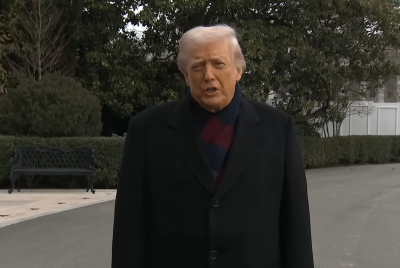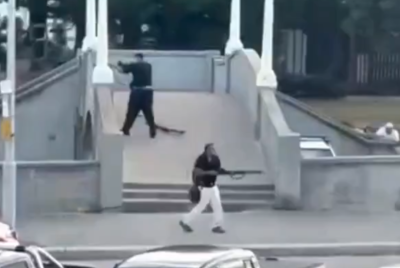Cincinnati Assault Update: 5 Suspects Identified But Should Bystanders Be Accountable?
Out of 100, only one called 911 per Cincinnati Police Chief

Five people have been charged following a violent street brawl in downtown Cincinnati that left two individuals seriously injured. The incident, which unfolded on Friday night at the junction of Elm and Fourth Streets, was filmed by multiple witnesses and widely shared on social media.
While the footage helped police identify suspects, it also exposed a concerning lack of public response. Authorities have confirmed that nearly 100 people witnessed the assault, yet only one person contacted emergency services. The event has triggered fresh debate about the role and responsibility of bystanders during violent incidents.
Suspects Identified as Police Begin Charging Process
Cincinnati Police Chief Theresa Theetge confirmed that five suspects are now facing charges in connection with the assault, according to Fox News. Video footage shows a man and a woman being physically assaulted; the woman was struck and knocked unconscious.
Witnesses reported that the male victim left the scene and returned about fifteen minutes later with others, after which the altercation escalated, New York Post reported. Prior to the confrontation, observers say racial slurs were allegedly exchanged between the parties involved.
Bystander Conduct Under Fire
Chief Theetge voiced her disappointment over the lack of response from those present. She said that while officers responded quickly after being contacted, the crowd's failure to act earlier meant the attack had already ended by the time help arrived.
Ken Kober, president of the Cincinnati Fraternal Order of Police, questioned why so few bystanders took action. He said it was deeply troubling that many chose to record the attack rather than attempting to defuse the situation or 'render aid', noting that one woman had been left unconscious at the scene.
The Psychology Behind Public Inaction
This pattern of inaction is often explained by the 'bystander effect', a psychological theory suggesting people are less likely to intervene in emergencies when others are present, as they assume someone else will act.
First studied in the 1960s by psychologists John Darley and Bibb Latané, the concept remains relevant today. However, newer research analysing real-world CCTV footage has found that intervention is still common in many incidents, depending on factors such as perceived danger, clarity of the situation, and group dynamics.
Political and Legal Response
Local leaders have condemned both the violence and the silence of the crowd. State Representative Cecil Thomas and members of the Cincinnati City Council said the incident reflects a wider civic problem. Thomas noted that 'we are failing as a city' when its residents film assaults rather than assist or report them, according to Fox 19. Council members urged citizens to set a stronger example, particularly for younger community members.
Currently, Ohio law does not impose a legal duty on bystanders to intervene or call for help. Police have stated that no charges will be brought against those who failed to act. However, community leaders have described the issue as a moral and social concern rather than a legal one, WCPO 9 reported.
This is absolutely unacceptable! #Downtown #Cincinnati, Ohio, Friday night! #fight erupts with people being jumped and outnumbered!
— Flesh Gordon (@TheFleshGordon) July 26, 2025
A man punched a woman in the face at the end of the video, knocking her out with her slamming the back of her to the pavement! 😳 pic.twitter.com/yNjJXMQnZc
Although the investigation remains focused on the individuals charged, the episode has revived public debate about collective responsibility during acts of violence. With only one emergency call made despite the presence of dozens of witnesses, officials are questioning the effectiveness of social norms and public engagement in such situations.
While there may be no legal obligation to intervene, campaigners and officials argue that greater public awareness and education could encourage more active responses during emergencies, potentially saving lives and reducing harm.
© Copyright IBTimes 2025. All rights reserved.





















